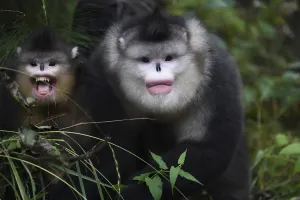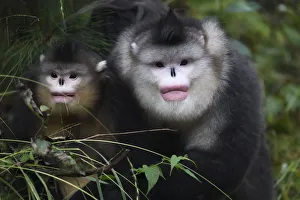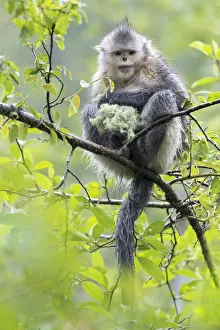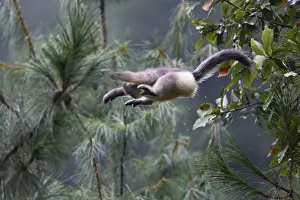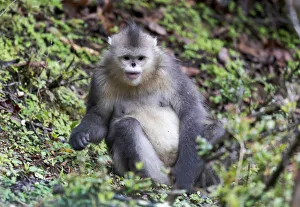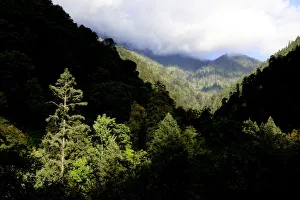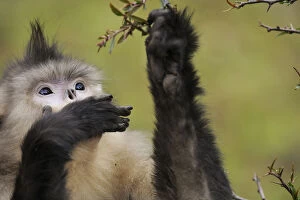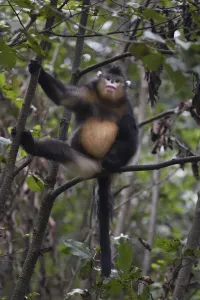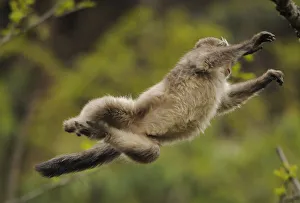Black Snub Nosed Monkey Collection
The black snub-nosed monkey, also known as the Yunnan snub-nosed monkey (Rhinopithecus bieti
All Professionally Made to Order for Quick Shipping
The black snub-nosed monkey, also known as the Yunnan snub-nosed monkey (Rhinopithecus bieti), is a fascinating species found in the Yun-Ling Mountains of Yunnan Province, China. These monkeys inhabit the mountain forests and can be spotted in the Ta Cheng Nature Reserve. With their distinctive appearance, both adult and young black snub-nosed monkeys captivate observers with their unique features. Their faces are adorned with a short, upturned nose that gives them their name. A portrait of one of these magnificent creatures showcases its striking beauty against the backdrop of Ta Chen National Park. These agile primates are often seen jumping between trees within their natural habitat. The lush vegetation provides them with ample opportunities to showcase their acrobatic skills while moving through the forest canopy. It's truly a sight to behold as they effortlessly navigate from branch to branch. In Tacheng, you may come across young Yunnan black snub-nosed monkeys exploring their surroundings under the watchful eye of adults. This close-knit family dynamic highlights how important social bonds are for these intelligent animals. Observing a female Yunnan Snub-nosed monkey feeding is an enchanting experience. As she delicately plucks leaves or fruits from nearby foliage, her nurturing nature becomes evident. It's heartwarming to witness such maternal care within this primate community. Perched on a tree at Ta Cheng Nature Reserve, a Yunnan snub-nosed monkey gazes into the distance with an air of curiosity and intelligence shining in its eyes. This moment captures just how deeply connected these creatures are to their environment and serves as a reminder of our shared responsibility to protect them. The black snub-nosed monkey's presence in Asia's Yun-ling Mountains is not only significant for biodiversity but also serves as an indicator of healthy ecosystems thriving amidst human development pressures. By preserving their habitat, we ensure the survival of this remarkable species for generations to come.

